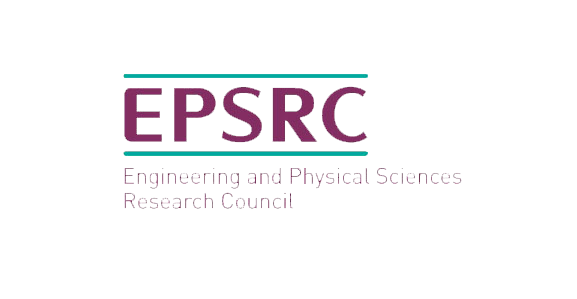Softwares
If you would like your code to be added to the list, please contact Sydnee O'Brien.
CP2K is a quantum chemistry and solid state physics software package that can perform atomistic simulations of solid state, liquid, molecular, periodic, material, crystal, and biological systems. CP2K provides a general framework for different modelling methods such as DFT using the mixed Gaussian and plane waves approaches GPW and GAPW. Supported theory levels include DFTB, LDA, GGA, MP2, RPA, semi-empirical methods (AM1, PM3, PM6, RM1, MNDO), and classical force fields (AMBER, CHARMM). CP2K can do simulations of molecular dynamics, metadynamics, Monte Carlo, Ehrenfest dynamics, vibrational analysis, core level spectroscopy, energy minimisation, and transition state optimisation using NEB or dimer method. Training resources associated with core-level specotrscopy can be found here.
CASTEP is a leading code for calculating the properties of materials from first principles. Using density functional theory, it can simulate a wide range of properties of materials proprieties including energetics, structure at the atomic level, vibrational properties, electronic response properties etc. In particular it has a wide range of spectroscopic features that link directly to experiment, such as infra-red and Raman spectroscopies, NMR, and core level spectra.
CRYSTAL: is a general-purpose program for the study of crystalline solids. The CRYSTAL program computes the electronic structure of periodic systems within Hartree Fock, density functional or various hybrid approximations (global, range-separated and double-hybrids). The Bloch functions of the periodic systems are expanded as linear combinations of atom centred Gaussian functions. Powerful screening techniques are used to exploit real space locality. Restricted (Closed Shell) and Unrestricted (Spin-polarized) calculations can be performed with all-electron and valence-only basis sets with effective core pseudo-potentials. The current release is CRYSTAL23.
FHI-aims: is an all-electron electronic structure code based on numeric atom-centered orbitals. It enables first-principles simulations with very high numerical accuracy for production calculations, with excellent scalability up to very large system sizes (thousands of atoms) and up to very large, massively parallel supercomputers (ten thousand CPU cores). Tutorials on its use for core-level spectroscopy can be found here.
NWCHem: aims to provide its users with computational chemistry tools that are scalable both in their ability to treat large scientific computational chemistry problems efficiently, and in their use of available parallel computing resources from high-performance parallel supercomputers to conventional workstation clusters. The NWChem software can handle: biomolecules, nanostructures, and solid-state system; from quantum to classical, and all combinations; Gaussian basis functions or plane-waves; scaling from one to thousands of processors; properties and relativity. It can be used to describe core-hole spectra using both frequency and real-time appraoches.
ONETEP: (Order-N Electronic Total Energy Package) is a linear-scaling code for quantum-mechanical calculations based on density-functional theory. It can be used to caculate core loss spectroscopy (EELS, XAS).
ORCA is an ab initio quantum chemistry program package that contains modern electronic structure methods including density functional theory, many-body perturbation, coupled cluster, multireference methods, and semi-empirical quantum chemistry methods. Its main field of application is larger molecules, transition metal complexes, and their spectroscopic properties. It has been extensively used to calculate X-ray spectra using a wide variety of methods including both DFT and post Hartree-Fock. Its forum can be found here. Training resources associated with core-level spectorscopy can be found here.
Quantum Espresso: is an integrated suite of open-source computer codes for electronic-structure calculations and materials modeling at the nanoscale. It is based on density-functional theory, plane waves, and pseudopotentials.
VASP: The Vienna Ab initio Simulation Package (VASP) is a computer program for atomic scale materials modelling, e.g. electronic structure calculations and quantum-mechanical molecular dynamics, from first principles. It uses the projector-augmented-wave method.It computes an approximate solution to the many-body Schrödinger equation, either within density functional theory (DFT), solving the Kohn-Sham equations, or within the Hartree-Fock (HF) approximation, solving the Roothaan equations. VASP can calculate XAS within the repsonse theory formalism and the SCH appraoch.
XANESNET: The affordable, accurate, and generalizable prediction of spectroscopic observables plays a key role in the analysis of increasingly complex experiments. XANESNET is a deep neural network for predicting the lineshape of X-ray absorption near-edge structure (XANES) and X-ray Emission spectra.
OptaDOS: OptaDOS is a code for calculating optical, core-level excitation spectra along with full, partial and joint electronic density of states (DOS). The code was developed by merging the LinDOS code of Andrew Morris and Chris Pickard at University College London with the optical properties code of Rebecca Nicholls and Jonathan Yates at Oxford University. OptaDOS is written in Fortran 95 and may be run in parallel using MPI. At present OptaDOS interfaces with CASTEP output files, although it is extendible to perform calculations on any set of band eigenvalues and their derivatives generated by any electronic structure code.




